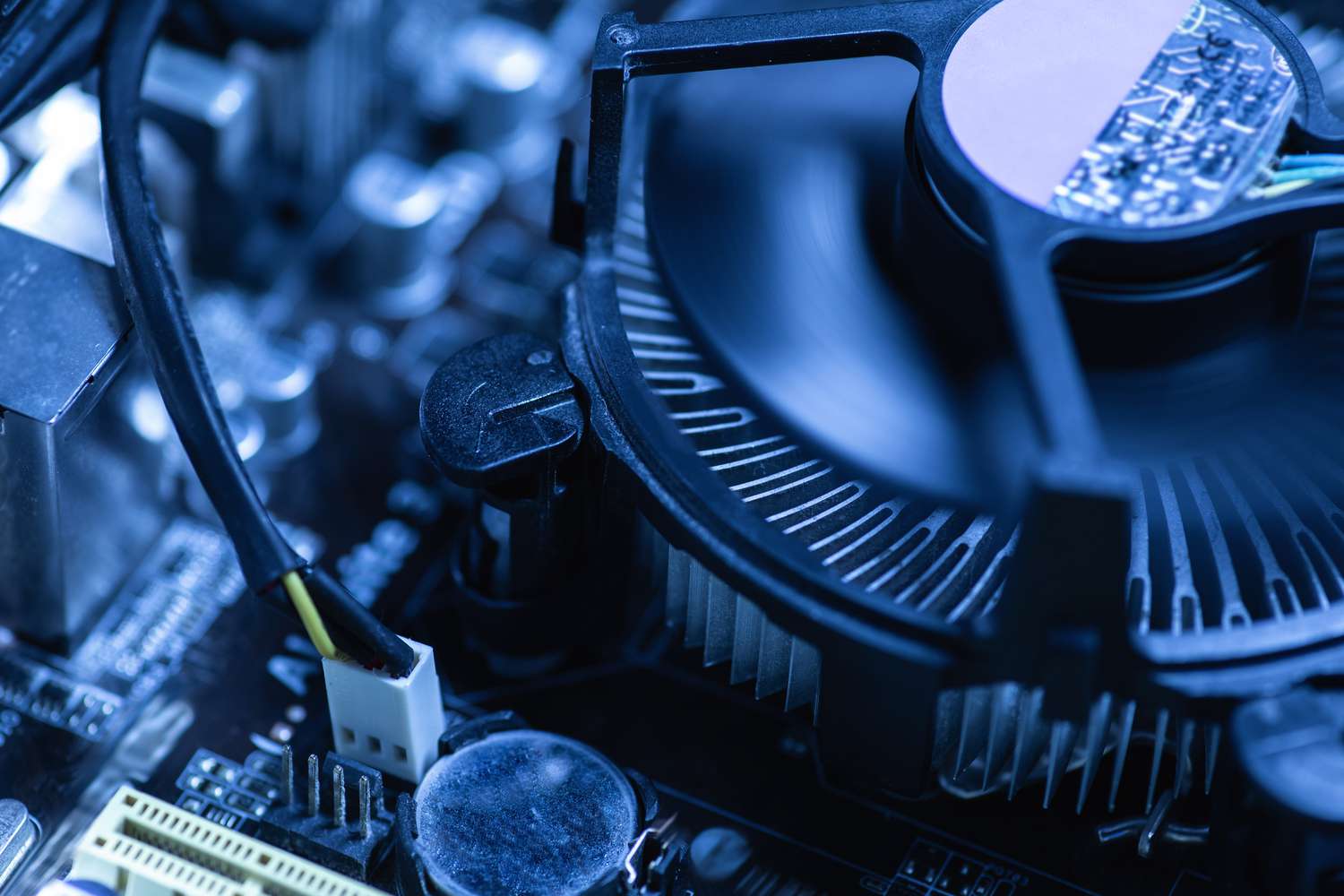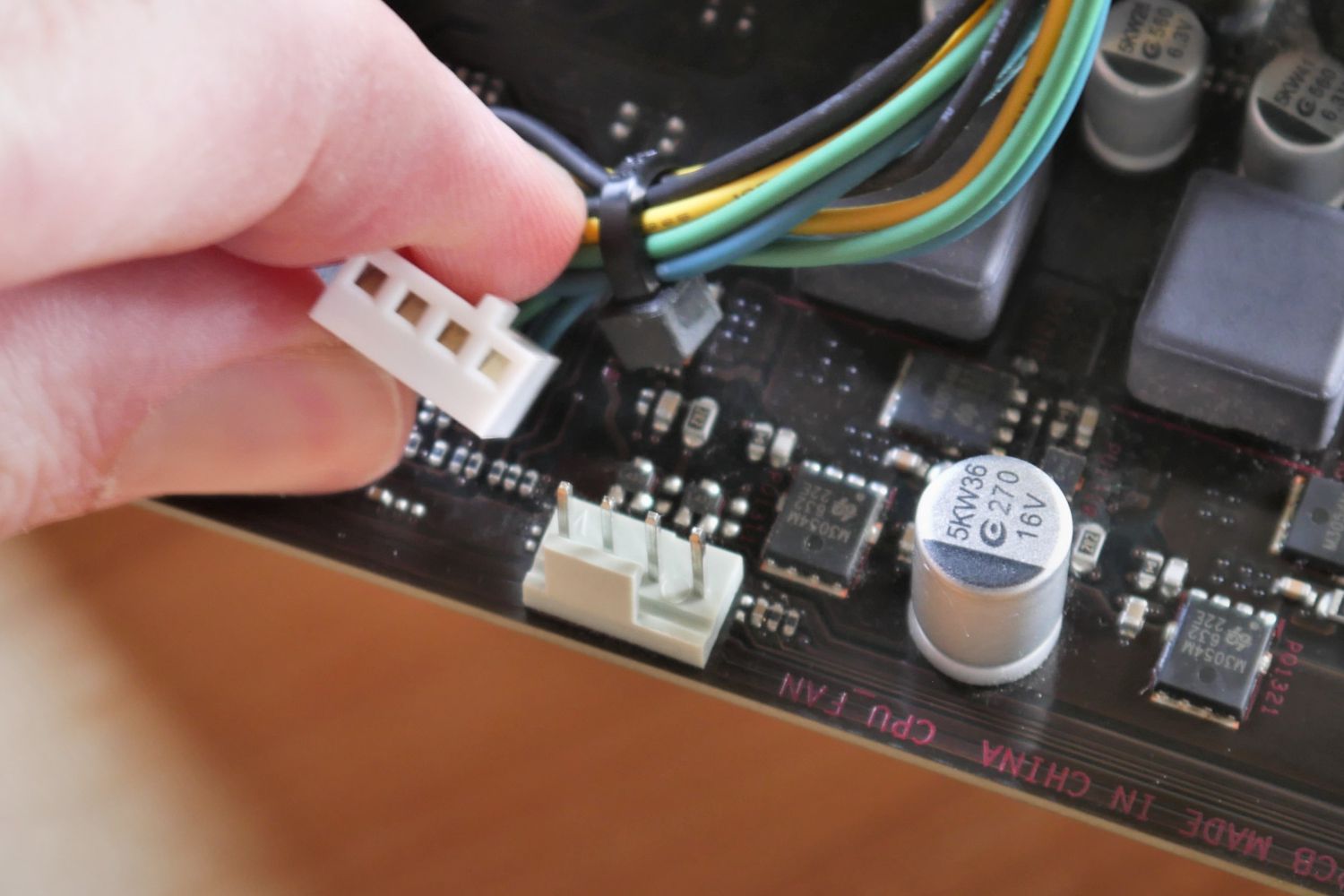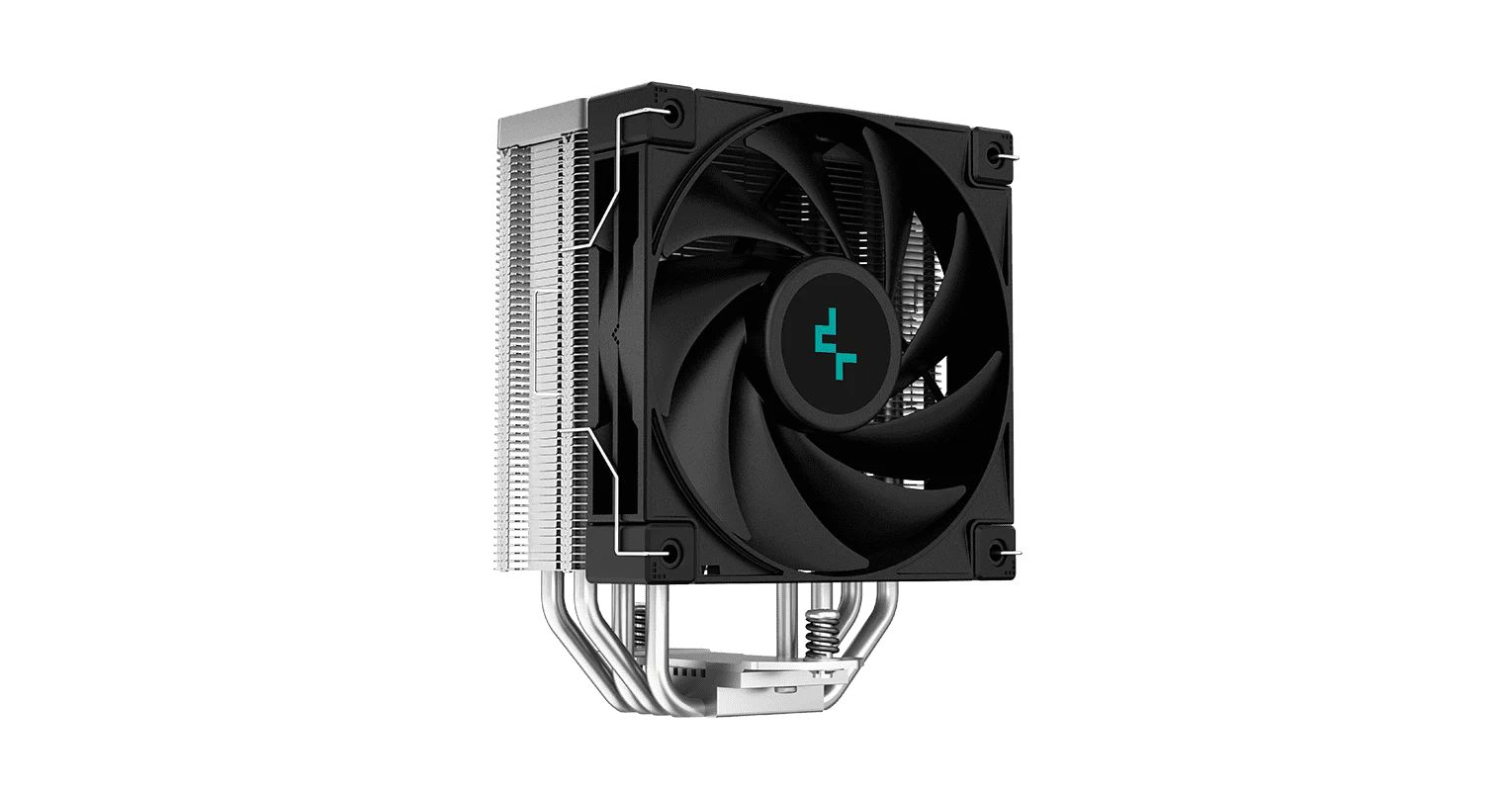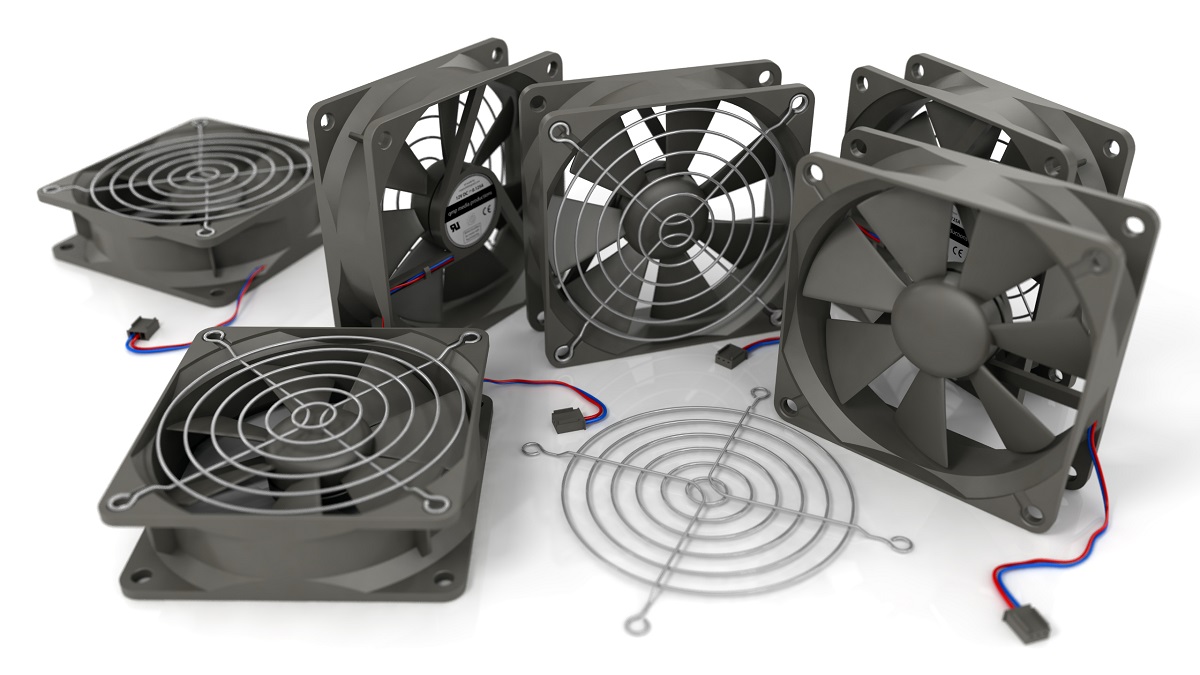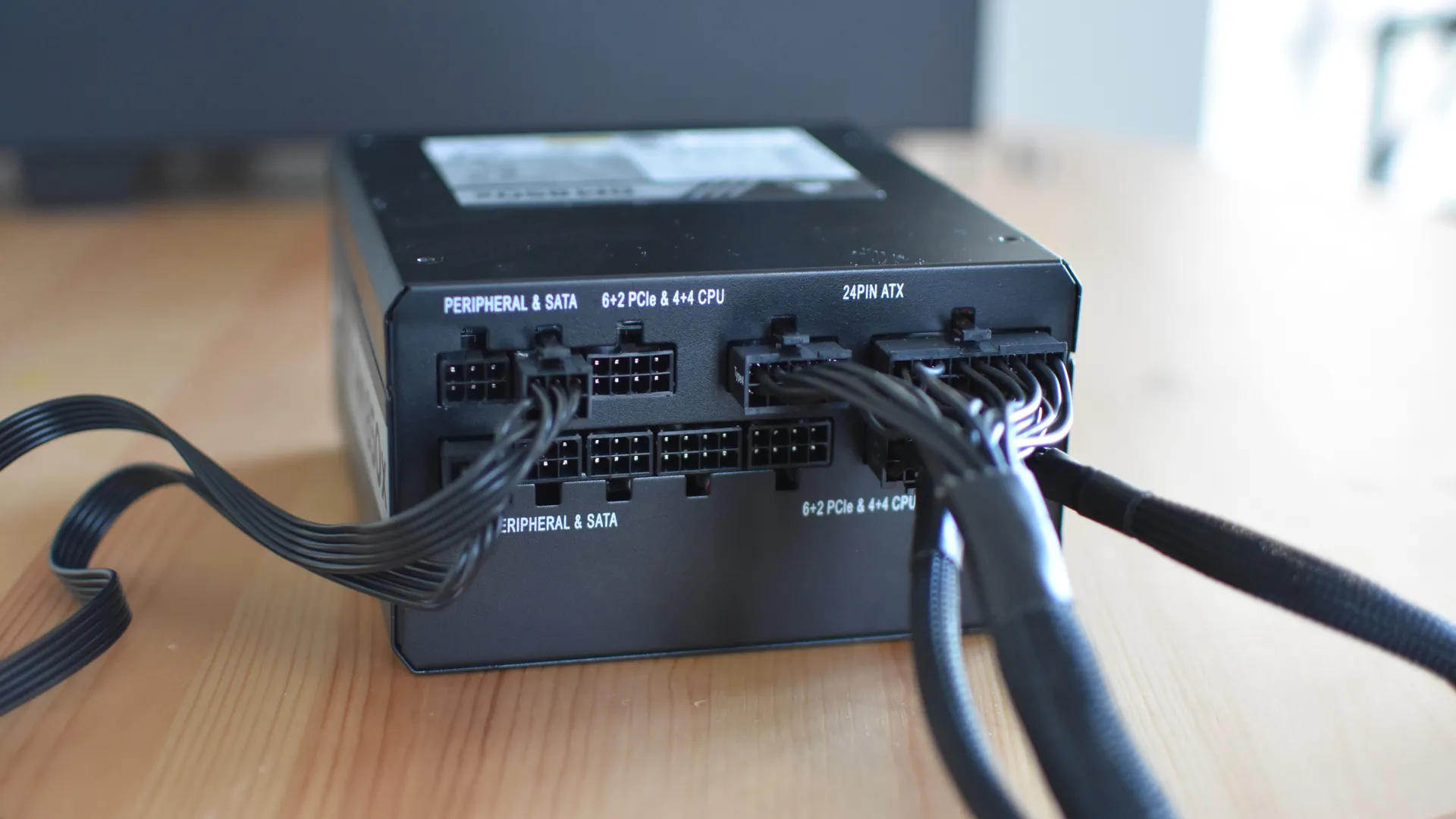Introduction
When it comes to cooling your computer, case fans play a crucial role in maintaining optimal temperatures. These fans not only keep your system running smoothly but also protect your valuable components from potential damage caused by heat buildup. If you’ve taken a closer look at the connectors on your case fan, you may have noticed that some of them have a 4-pin design. In this article, we will explore the reasons behind the prevalence of 4-pin connectors on case fans.
A 4-pin connector, also known as a PWM (Pulse Width Modulation) connector, offers numerous advantages over the traditional 3-pin connectors. The additional pin on the 4-pin connector provides better control over fan speed, enhances fan performance, and ensures compatibility with modern motherboards. These benefits make the 4-pin connector a popular choice among PC enthusiasts and gamers looking to optimize their cooling systems.
In this article, we will delve into the inner workings of a 4-pin connector, explain how it functions, and discuss the advantages it offers. Additionally, we will provide some tips for connecting a 4-pin fan to your system. By the end of this article, you will have a deeper understanding of why a 4-pin connector is a valuable component in case fans and how it can improve the cooling efficiency of your computer.
What is a 4-pin connector?
A 4-pin connector is a type of connector used in case fans to provide power and control signals. It consists of four pins that serve different functions and enable better control over fan speed. The pins are labeled as +12V (power), GND (ground), RPM (tachometer), and PWM (pulse width modulation).
The +12V pin supplies power to the fan, ensuring that it operates correctly. The GND pin is responsible for completing the electrical circuit. Together, these two pins ensure that the fan receives the necessary power to function.
The RPM pin is used to provide information about the fan’s speed. It sends pulses which are counted by the motherboard or fan controller to determine the fan’s rotational speed. This information is useful for monitoring and controlling fan operation.
The most crucial pin in the 4-pin connector is the PWM pin. It allows for precise control of the fan’s speed by utilizing pulse width modulation. PWM controls the duty cycle of the signal, regulating the power supplied to the fan. By adjusting the duty cycle, the fan speed can be adjusted, resulting in quieter operation or increased cooling performance as needed.
Compared to traditional 3-pin connectors that lack the PWM pin, a 4-pin connector offers significantly better control over fan speed. This finer control allows for more accurate temperature management, as the fan speed can be adjusted dynamically based on the system’s heat output or the user’s preferences.
Now that we have a better understanding of what a 4-pin connector is and the functions of its various pins, let’s delve deeper into how this connector works and the advantages it brings to case fans.
How does a 4-pin connector work?
To understand how a 4-pin connector works, we need to dive into the concept of pulse width modulation (PWM). PWM is a technique used to control the amount of power supplied to electronic devices such as case fans. It involves rapidly switching the power on and off at varying duty cycles.
Within the 4-pin connector, the PWM pin is responsible for transmitting the PWM signal. This signal is received by the fan’s built-in PWM controller, which regulates the fan’s speed based on the duty cycle of the signal.
The fan’s PWM controller utilizes a driver transistor to switch the voltage supply on and off rapidly. The length of time the voltage is on compared to the total cycle time determines the fan’s speed. For example, if the fan operates at 50% duty cycle, it will receive power for 50% of the cycle time and remain idle for the remaining 50%.
The PWM signal generated by the motherboard or fan controller can have different duty cycles ranging from 0% to 100%. A 0% duty cycle means the fan will not receive any power and will remain stationary, while a 100% duty cycle results in full power being supplied, causing the fan to operate at maximum speed. Intermediate duty cycles allow for finer adjustments to the fan’s speed, providing a balance between airflow and noise level.
The ability to adjust the fan’s speed dynamically using PWM offers several benefits. Firstly, it allows for quieter operation when the system is under minimal load or when low noise is desired. The fan speed can be reduced to a minimum, resulting in a virtually silent cooling solution. Secondly, when the system requires additional cooling power, the fan speed can be ramped up to maintain optimal temperatures. This flexibility makes it possible to achieve a balance between performance and noise levels.
In the next section, we will explore the benefits of using a 4-pin connector and how it enhances the performance of case fans.
The benefits of a 4-pin connector
The use of a 4-pin connector in case fans offers several advantages over the traditional 3-pin connectors. Let’s explore the benefits and understand why this connector has become the preferred choice for cooling systems.
Better control of fan speed: The additional pin in a 4-pin connector is dedicated to pulse width modulation (PWM) control. This allows for precise adjustment of the fan’s speed by varying the duty cycle of the PWM signal. Compared to 3-pin connectors that rely on voltage control, the 4-pin connector provides finer control, enabling more accurate temperature management and noise reduction.
Enhanced fan performance: The ability to precisely control fan speed translates to enhanced cooling performance. The fan speed can be adjusted based on the system’s heat output, allowing for efficient cooling under different load conditions. This results in improved airflow and temperature regulation, reducing the risk of component overheating and extending the lifespan of your hardware.
Compatibility with modern motherboards: Most modern motherboards are equipped with PWM fan headers to support 4-pin connectors. This widespread compatibility makes it hassle-free to integrate case fans with 4-pin connectors into your system. It ensures that you can take advantage of the benefits offered by PWM control without any compatibility issues.
The role of PWM (Pulse Width Modulation): The integration of PWM technology in 4-pin connectors is a key factor in the improved control and performance of case fans. PWM allows for the precise adjustment of fan speed, ensuring optimal cooling under different conditions. By adjusting the duty cycle of the PWM signal, users can strike a balance between noise levels and cooling efficiency, tailoring the system’s performance to their specific needs.
Now that we understand the benefits of using a 4-pin connector, let’s move on to some tips for connecting a 4-pin fan to your system and getting the most out of it.
Better control of fan speed
One of the significant advantages of using a 4-pin connector on a case fan is the improved control over fan speed. The additional pin on the 4-pin connector is dedicated to Pulse Width Modulation (PWM), which allows for precise adjustment of the fan’s speed.
PWM control differs from the traditional voltage control used in 3-pin connectors. While voltage control adjusts the fan speed by varying the voltage supplied, PWM control modulates the power delivery by rapidly switching the power on and off at varying duty cycles. This means that the fan receives a constant voltage supply, but the duration of that supply is adjusted to control the fan’s speed.
The precision offered by PWM control allows for a more accurate response to changes in system temperature. The system can dynamically adjust the fan speed based on heat output, ensuring optimal cooling performance while minimizing noise levels. For example, when the system is under minimal load or the temperatures are low, the PWM signal can reduce the duty cycle, resulting in a slower fan speed and quieter operation. On the other hand, during intensive tasks or high temperatures, the duty cycle can be increased, ramping up the fan speed to maintain optimal cooling.
This fine-grained control of fan speed not only ensures efficient temperature management but also enables users to customize the cooling performance to their specific preferences. Whether you prioritize silent operation or maximum cooling power, the ability to adjust the fan speed precisely allows you to strike the right balance for your needs.
Furthermore, the improved control over fan speed offered by a 4-pin connector can lead to energy savings. By adjusting the speed based on the cooling requirements, the fan operates at its optimal level instead of running at maximum speed constantly. This results in reduced power consumption and quieter operation when cooling demands are lower.
In summary, the inclusion of a 4-pin connector on a case fan provides better control over fan speed through PWM modulation. This superior control allows for a more precise response to temperature changes, customizable cooling performance, energy efficiency, and quieter operation. As we continue, we will explore other benefits offered by 4-pin connectors and how they enhance the performance of case fans.
Enhanced fan performance
The use of a 4-pin connector on case fans goes beyond just offering better control over fan speed; it also contributes to enhanced fan performance. The ability to precisely adjust the fan’s speed using Pulse Width Modulation (PWM) leads to several benefits that improve the cooling capabilities of the fan.
One of the primary advantages of enhanced fan performance is improved airflow. By adjusting the fan speed, the airflow can be optimized based on the cooling needs of the system. When the temperature rises or the system undergoes demanding tasks, the fan speed can be increased to boost the airflow, effectively dissipating heat from the components. This prevents overheating, ensuring the stability and longevity of the system.
Moreover, the increased fan speed provides an opportunity to create positive pressure within the case, which helps to expel hot air and bring in cool air more efficiently. This positive airflow not only contributes to better cooling but also minimizes the accumulation of dust and other particles in the system, reducing the need for frequent cleaning and improving overall system hygiene.
Additionally, the performance of a case fan with a 4-pin connector can be further enhanced by utilizing fan curves. Fan curves define the relationship between temperature and fan speed, allowing the user to specify the desired cooling performance at different temperature levels. By customizing the fan curve, users can ensure optimal cooling efficiency according to their specific requirements.
Another aspect of enhanced fan performance is the reduction of noise. The precise control offered by PWM allows the fan speed to be adjusted to the minimum required for effective cooling, resulting in quieter operation when compared to fans with fixed-speed settings. This is particularly beneficial in environments where noise is a concern, such as recording studios or offices where a quiet working atmosphere is desired.
In summary, the use of a 4-pin connector on case fans leads to enhanced performance by improving airflow, creating positive pressure, enabling fan curve customization, and reducing noise levels. These benefits contribute to more efficient cooling, optimal system performance, and a quieter computing experience. Next, we will explore the compatibility of 4-pin connectors with modern motherboards and how it simplifies integration into your system.
Compatibility with modern motherboards
The 4-pin connectors found on case fans offer excellent compatibility with modern motherboards, making it easy to integrate them into your system. Most modern motherboards are equipped with PWM fan headers specifically designed to support 4-pin connectors, ensuring seamless connectivity and optimal functionality.
The widespread compatibility of 4-pin connectors is a result of their popularity and the advantages they offer over traditional 3-pin connectors. As PWM technology has become the preferred method for controlling fan speed, motherboard manufacturers have responded by incorporating PWM fan headers on their boards.
These dedicated PWM fan headers provide the necessary power and control signals required by the 4-pin connectors. When you connect a case fan with a 4-pin connector to a modern motherboard’s PWM fan header, you can take full advantage of the fine-grained control over fan speed, temperature management, and noise reduction capabilities offered by PWM control.
Furthermore, the compatibility of 4-pin connectors with modern motherboards ensures that users can easily upgrade their systems without concerns about connector compatibility. Whether you are building a new system or upgrading an existing one, having a 4-pin connector on your case fans allows for a hassle-free integration process.
This compatibility also extends to fan control software provided by motherboard manufacturers. Many modern motherboards come with dedicated software utilities that allow users to monitor and adjust fan speeds, create custom fan profiles, and even synchronize fan speeds with system temperatures. Having a case fan with a 4-pin connector ensures that you can fully utilize these features and tailor your cooling solution to your specific needs.
In summary, the 4-pin connectors found on case fans are compatible with modern motherboards, thanks to the widespread adoption of PWM fan headers. This compatibility ensures easy integration into your system, enabling you to harness the benefits of PWM control for temperature management, noise reduction, and optimal cooling performance. Next, we will explore some tips for connecting a 4-pin fan to your system effectively.
The role of PWM (Pulse Width Modulation)
Pulse Width Modulation (PWM) plays a vital role in the functionality of case fans with 4-pin connectors. It is the technology that enables precise and dynamic control over the fan’s speed, resulting in efficient temperature management and quieter operation.
PWM works by rapidly switching the power supply on and off at varying duty cycles. The duty cycle of a PWM signal refers to the percentage of time the power supply is on during each cycle. For example, a 50% duty cycle means that the power supply is on for half of the cycle.
In the context of case fans, the PWM signal is generated by the motherboard or fan controller and transmitted through the dedicated PWM pin on the 4-pin connector. The fan’s built-in PWM controller receives this signal and adjusts the fan’s speed based on the duty cycle.
By adjusting the duty cycle of the PWM signal, the fan speed can be precisely controlled. A higher duty cycle corresponds to a higher fan speed, while a lower duty cycle results in a slower fan speed. The ability to fine-tune the fan speed allows for effective cooling while minimizing noise levels.
One of the advantages of PWM control is its quick response to changes in temperature. When the system temperature increases, the PWM signal can automatically increase the duty cycle, ramping up the fan speed to quickly dissipate the heat. Conversely, when the temperature decreases, the duty cycle can be reduced to lower the fan speed, resulting in quieter operation.
Moreover, PWM control provides the flexibility to customize fan speed profiles. Fan speed can be adjusted based on specific preferences and cooling requirements. Many motherboards and fan control software allow users to define fan curves, which specify the desired fan speed at different temperature ranges. This feature enables users to create a tailored cooling solution that balances performance and noise levels according to their needs.
In summary, PWM technology is the driving force behind the precise control and performance of case fans with 4-pin connectors. It enables dynamic adjustment of fan speed in response to temperature changes, ensuring optimal cooling efficiency. The ability to customize fan speed profiles adds an extra layer of flexibility, allowing users to fine-tune their cooling solution and achieve the desired balance between performance and noise levels. Next, we will provide some practical tips for effectively connecting a 4-pin fan to your system.
Tips for connecting a 4-pin fan
Connecting a 4-pin fan to your system is a straightforward process, but there are a few tips to keep in mind to ensure a successful and efficient setup. Follow these tips for a smooth installation and optimal performance:
- Identify the right connector: Make sure your motherboard has a 4-pin PWM fan header to support the 4-pin connector on your fan. While most modern motherboards have PWM fan headers, double-check the specifications to ensure compatibility.
- Locate the appropriate fan header: Locate the PWM fan header on your motherboard. It is usually labeled as “CPU_FAN,” “SYS_FAN,” or similar. Refer to your motherboard manual for the exact location and identification of the fan headers.
- Make the connection: Align the pins on the 4-pin fan connector with the corresponding holes on the PWM fan header. Make sure the orientation is correct, and gently press the connector onto the header until it is firmly seated. Avoid applying excessive force to prevent damaging the pins on the connector or the header.
- Cable management: Organize and route the fan cable neatly to minimize clutter and optimize airflow within your system. Use cable ties or Velcro straps to secure the cable and prevent it from interfering with other components or obstructing airflow.
- Configure fan settings: Once the fan is connected, access your motherboard’s BIOS or fan control software to configure the fan settings. This may include adjusting the fan speed curve, setting temperature thresholds, or enabling any additional fan control features offered by your motherboard.
- Monitor fan performance: Utilize monitoring software or the BIOS to keep an eye on your fan’s performance. Monitor the fan’s RPM, temperature readings, and noise levels to ensure optimal cooling and to detect any potential issues or abnormalities.
- Regular maintenance: Periodically clean your case fans to remove dust buildup, as it can impede performance and increase noise levels. Use compressed air or a soft brush to gently clean the fan blades and ensure smooth operation.
By following these tips, you can ensure a proper connection and optimal performance of your 4-pin fan. Enjoy the benefits of precise control over fan speed and efficient cooling for your system.
Conclusion
In conclusion, the prevalence of 4-pin connectors on case fans is no coincidence. These connectors offer several advantages that contribute to better cooling performance, greater control over fan speed, and seamless integration with modern motherboards.
The 4-pin connector, with its dedicated PWM pin, allows for precise adjustment of fan speed using Pulse Width Modulation. This fine-grained control enables optimized temperature management, noise reduction, and customizable cooling performance. The ability to dynamically adjust fan speed based on system heat output ensures efficient cooling under varying load conditions.
In addition, the use of PWM technology in 4-pin connectors promotes enhanced fan performance. The adjustable fan speed results in improved airflow, positive pressure, and reduced accumulation of dust, ultimately prolonging the lifespan of your hardware.
The compatibility of 4-pin connectors with modern motherboards simplifies the integration process and ensures seamless connectivity. With dedicated PWM fan headers on most modern motherboards, users can take full advantage of the benefits offered by PWM control and utilize fan control software to customize their cooling solution.
When connecting a 4-pin fan to your system, it’s crucial to follow some tips for optimal results. Identifying the right connector, locating the appropriate fan header, secure cable management, and configuring fan settings are key considerations to keep in mind.
Regular maintenance, including cleaning the fans and monitoring their performance, is also essential for optimal cooling efficiency and noise reduction.
Overall, the prevalence of 4-pin connectors on case fans, along with the benefits they offer, showcases their importance in modern cooling systems. Understanding how these connectors work, their advantages, and how to connect them effectively enables users to maximize their system’s cooling performance and create an optimal computing experience.







